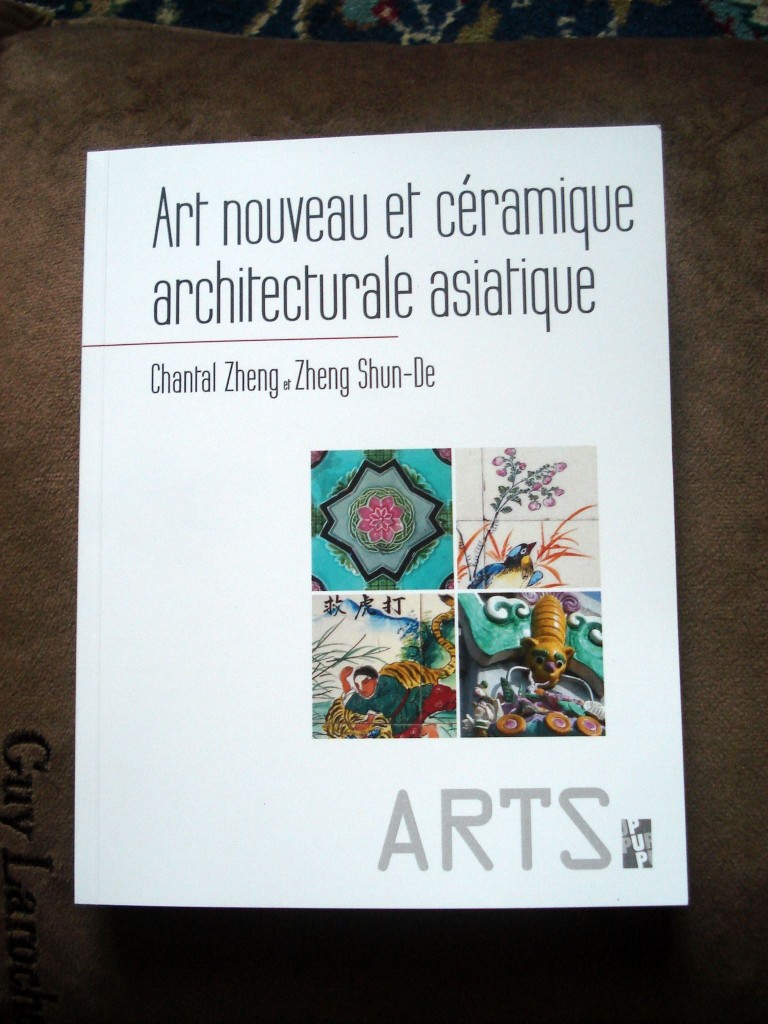The Bukit Brown Tiles
0
The Art Nouveau (Peranakan) tiles of Bukit Brown have caught the attention of a French academic who helms an international research team. The team has embarked on a 4 year study of the tiles in Asia, under an MOU with the Unesco University and Heritage Forum.
Professor Chantal Zheng together with her husband, Dr Zheng Shun-De, visited Bukit Brown recently, guided by our tiles expert, Victor Lim.
The visit, so impressed them, they wrote to All Things Bukit Brown to tell us more about their project and how they hope, they can include Bukit Brown in their study. Reproduced here with Professor Chantal’s kind permission.
“I am very grateful to your association and to Mr Victor LIM for having introduced me to this fascinating Singapore Cultural Heritage field concerning « Art nouveau tiles ». As a matter of fact, this is particularly interesting for the Tiles research team I am responsable for in the IRASIA (Research Institute for Asian Studies): Aix-Marseille University in the south of France. My Research Institute (IRASIA) is conducting historical, anthropological and sociological researches on many countries in East and South-East Asia such as China, Korea, Vietnam, Thailand, Japan, India, and Taiwan.
Three years ago, we submitted on the behalf of the University a research project on “Art nouveau tiles” in Asia to the Unesco University and Heritage Forum. The project has been accepted and a MOU has been signed by Aix – Marseille Université and The Unesco Forum for 4 years (2012-2016). The first objective being to make a survey of the presence of these specific tiles in East Asia (China, Taiwan, Japan, Korea), South-East Asia (Malaysia, Philippines, Singapore, Indonesia) and even in South Asia with India. The second objective is to select and write a report on some particular and (to use Unesco vocabularly) “exceptional” places where tiles are found in great number.
It appears that these tiles have been diffused by the Chinese Diaspora and the Peranakan culture in Asia. They constitute a cultural asset common to many Asian countries, are the testimony of cultural, artistic and even commercial exchanges between East and West at the beginning of the XXth century and that is why they present a very great interest for the research. In Singapore, I have discovered many districts with very beautiful and unique houses decorated with a profusion of tiles, all in very good state and very well preserved. And I also had the opportunity to make a visit to Bukit Brown Cemetery
I was very surprised to see so many beautiful Peranakan tombs decorated with old tiles. As far as I understand the situation, this cemetery is now on the way to being destroyed for the construction of a road. That is a real pity indeed and I do hope very sincerely the tiles may be preserved, as I doubt there is another place in the world comparable to Bukit Brown. It is our hope that these tiles will be kept in good condition as they must be considered an important element of the Singapore national treasure.
Conscious of the interest that Singapore presents and of the precious contribution of the Peranakan culture to its cultural heritage, my research team on Asian Art nouveau tiles (which includes 7 French researchers and architects, a Japanese Museum director: Hyogo Prefectural Museum of Archaelogy, a Taiwanese Association for Cultural Heritage, a Taiwanese historian and a Taiwanese architect: University of Kaohsiung), is prepared to focus now on the history of the Republic of Singapore to discover the cultural and commercial links with other Asian countries in the diffusion of Art Nouveau tiles (Japanese or European). We are very grateful to your association and to your colleagues for the help in our research during our short stay in Singapore and hope we will continue in the future to cooperate with you and with Singapore architects and historians on the tiles subject.” Chantal ZHENG, Professor, Department of Asiatic Studies, Aix-Marseille Université
You can learn more about the tiles this Sunday 12 January at Bukit Brown with Victor Lim. Details here





Comments